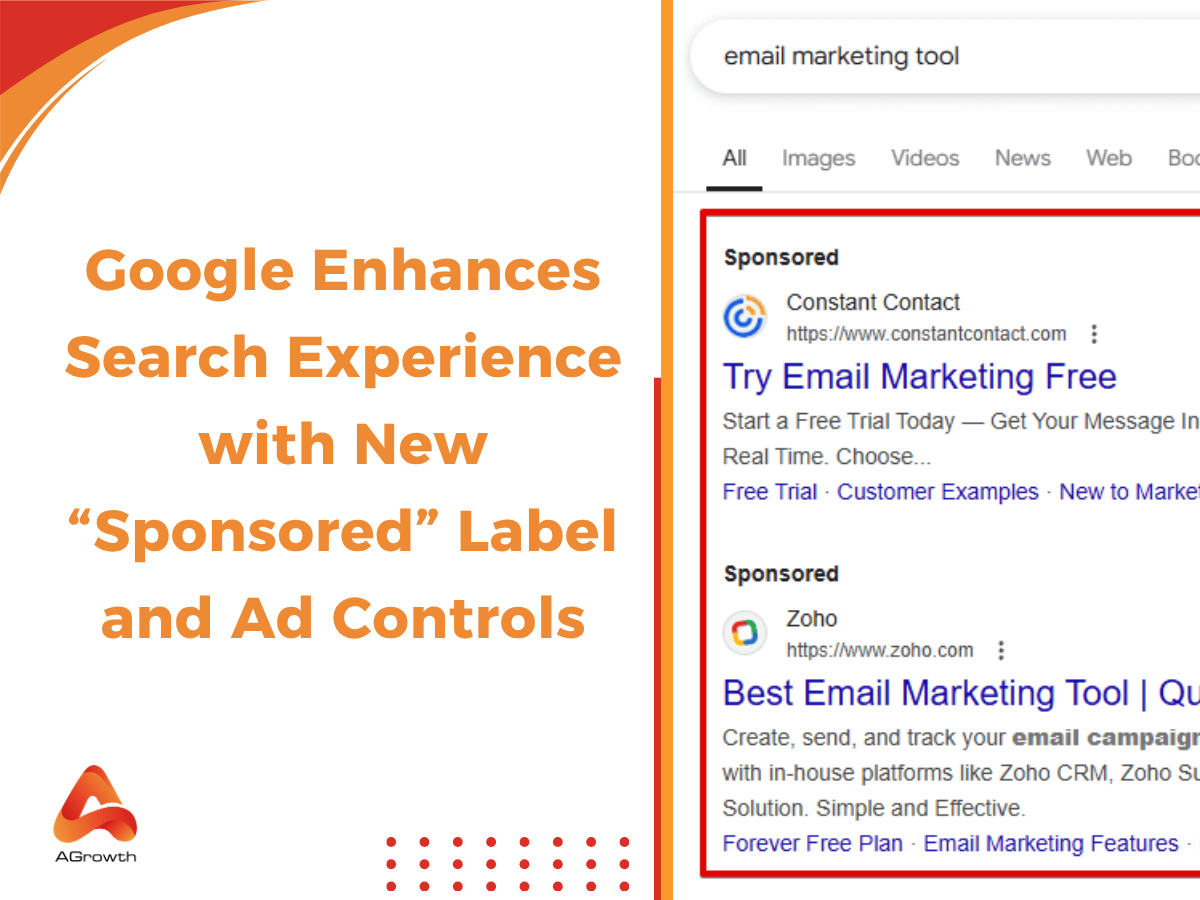
Table of Contents
Update YouTube and Discover Feed Ad Requirements
Advertising on YouTube and the Discover feed is subject not only to the general Google Ads policies but also to additional creative standards. These extra rules are meant to guarantee that ads blend smoothly with the environment, remain safe for broad audiences, and don’t disrupt the viewing or browsing experience. All advertisers should be aware that the English version of the policy serves as the primary source of reference.
How the Review System Works
When a new ad is created or when changes are made to an existing campaign, Google automatically reviews the ad and its related assets. This process combines automated technology with manual checks where necessary. Ads that comply with all standards will be labeled “Eligible”, while those that violate policy will receive a “Disapproved” status with an explanation of what went wrong. If you believe an ad was mistakenly flagged, or after you have fixed the issues, you can submit it for another review through the Policy Manager.
Fixing a Disapproved Ad
If your ad is flagged as disapproved, you can review detailed steps in Google’s guide on fixing policy violations. After making the necessary adjustments so the ad meets requirements, you can request a review directly from your Google Ads account through the Policy Manager.
If you feel the decision was made in error, the same appeal option is available. However, in some situations — such as when content is removed due to a legal order — appeals may not be possible. In such cases, Google will include information about your specific appeal options within the notification you receive regarding your ad or account.
Prohibited Content
Exaggerated or inaccurate claims
YouTube and Discover ads must follow all Google Ads rules, including those on Misrepresentation. Beyond that, Google applies stricter limits here: ads cannot make exaggerated or false claims that create unrealistic expectations for users. The restrictions include:
Clickbait
Ads are not allowed if they contain overstated or misleading claims about a product or service, or if they trick users into engaging.
Examples (non-exhaustive):
-
Ads that claim instant wealth, “free money”, or suggest people will receive money without a clear and legitimate process, such as:
“Make $5,000 in 5 minutes!” -
Promoting giveaways or cash offers without transparent conditions, like advertising a $1,000 item for "$1 ONLY!" or guaranteeing unlikely outcomes.

Unrealistic guarantees
Prohibited content includes ads that claim impossible or unverified results, especially around product performance, availability, or health outcomes.
Examples (non-exhaustive):
-
Ads guaranteeing results without evidence: “Lose 20 pounds in one week without dieting.”
-
Stating that a cure or solution always works or is available in unlimited supply.
Language to elicit guilt, urgency, fear
Ads must not pressure users by making them feel guilty, frightened, or rushed into action.
Examples (non-exhaustive):
-
Phrases like “only 5 minutes left!” used to create false urgency.
-
Messages designed to manipulate emotions, such as shaming users for not taking action.
Examples of allowed content
-
Ads that promise money while clearly explaining the legitimate actions required for users to actually obtain it are acceptable.
-
Ads featuring user testimonials are also allowed, as long as the testimonials do not exaggerate, misrepresent outcomes, or aim to provoke intense negative emotions.
Negative events and imagery
YouTube and Discover Feed ads must also comply with other Google Ads guidelines, such as Inappropriate Content, Sensitive Events, Dangerous or Derogatory Content, and Shocking Content. Beyond those, additional limits apply:
Mentally distressing
Ads that intend to shock, frighten, or upset viewers — using disturbing visuals or negative events — are not permitted.
Examples (non-exhaustive):
-
Funerals with weeping individuals, emotional breakdowns, people collapsing in grief
-
Scenes of natural disasters, accidents, riots, or simulated horror meant to scare
-
Depictions of abuse, self-harm, addiction, or violent conflict
Disturbing or gruesome content
Ads showing excessive gore, exposed organs, dramatic blood splatter, or grotesque visuals are disallowed.
Examples (non-exhaustive):
-
Detailed portrayals of dismemberment, organs, or bodies in decay
-
Over-the-top blood splashing, internal tissues visible, extreme vomit scenes
Examples of allowed content
Ads containing content that is presented neutrally and that avoids any distressing themes or imagery are allowed.

Improper content
On YouTube and Discover, ads must avoid the following types of content:
Body parts and health conditions
Ads cannot depict graphic medical or dental operations, visible wounds, close-ups of infections, or bodily fluids.
Examples (non-exhaustive):
-
Surgical scenes showing blood, guts, or exposed internal organs
-
Close-up skin conditions, rashes, open sores, or pus

Violent and dangerous acts
Any depiction of weapon use, graphic violence, or illegal activity is not allowed, including content encouraging dangerous behavior or imitation.
Examples (non-exhaustive):
-
Violent fights, gunfire, gore, or torture scenes
-
Dangerous stunts or challenges (e.g. “eat ___ challenge”)
-
Content promoting weapon trade, trafficking, or illegal acts

Racy content
Ads must not include nudity, sexually suggestive poses, or explicit sexual imagery. Also disallowed are ads promoting sexual services with suggestive language (e.g., “hook-up”, “no strings attached”).
Examples (non-exhaustive):
-
Focus on genitalia, exposed breasts, or provocative poses
-
Dating ads with nudity or erotic stylings
-
Strip clubs, adult livestreams, or suggestive role-play games
Recreational drugs
Ads showing or promoting illegal substances, drug use, paraphernalia, or the glorification of consumption are prohibited.
Examples (non-exhaustive):
-
Showing cannabis leaves, cigarettes, bongs, rolling papers
-
Ads depicting users taking drugs or endorsing substance use
Inappropriate language
Use of profanity, slurs, offensive gestures, or derogatory remarks in any language or variant is disallowed.
Examples (non-exhaustive):
-
Curse words, insulting language, or nuances and misspellings of such
-
Hate speech, slurs against protected groups.
Explore comprehensively about Google Ad restricted content through our post here!
Examples of allowed content
-
Medical service ads use neutral visuals (e.g., showing a doctor’s office without graphic details).
-
Fitness ads demonstrating safe workouts without extreme or violent stunts.
-
Romantic dating ads that avoid nudity or sexually explicit content.
-
Educational material that discusses drug prevention without glorifying use.
-
Ads with casual, non-offensive language.
Sensitive applications
Ads shown on YouTube and Discover Feeds are not permitted to promote apps that fall under sensitive categories, as outlined below. All app-related campaigns must also comply with the general Google Ads app advertising requirements.
Applications in any of the categories listed below are classified as sensitive and therefore cannot be advertised through YouTube or Discover:
-
Social networking apps that include nudity or sexual themes
-
Social platforms are designed primarily for meeting new people
-
Dating apps whose main focus is building romantic or intimate relationships
Apps that fall into the sensitive categories above may only be promoted if they meet all of the following conditions:
-
The app does not include live streaming features
-
The app does not enable live chat with unknown users
-
The app itself and its ads avoid racy, provocative, or sexually suggestive material
Quality checks
Ads shown on YouTube and Discover Feeds must meet the Google Ads Editorial standards.
Assets that fail to meet the quality requirements for YouTube and Discover ads are not allowed.
Examples (non-exhaustive):
-
Text that is unclear, misspelled, or incorrectly uses capitalization or special characters
-
Images that are blurry, stretched, distorted, or poorly cropped.
Considerations for professional media
Ads that feature material taken from professional productions — such as films, television shows, video games, published literature, or theater — are reviewed under an adjusted standard within the Negative events and imagery and Improper content policies. This adjustment allows reviewers to take the original context into account, but it does not mean the content is automatically exempt from policy.
Source requirement
To qualify for this contextual review, the ad must clearly credit the source media so viewers recognize the origin — for example, by naming the film, show, or game directly.
Self-published or amateur works are not eligible for this exception.
YouTube masthead content requirements
YouTube masthead ads appear at the very top of the YouTube homepage and represent one of the most prominent placements available to advertisers. To ensure a high-quality viewer experience, masthead ads must follow:
-
The YouTube and Discover Feed ad requirements are listed on this page
-
The dedicated Masthead format requirements
Each masthead creative will be individually reviewed to verify compliance with these additional rules. The Masthead format requirements may be stricter than policies applied to other Google placements. As a result, an ad disapproved for the YouTube masthead may still remain eligible to run across other Google-owned properties.
Common reasons for disapproval
If your Google ad is disapproved, it may be due to one of the following issues. Use the checklist below to identify and resolve the problem:
|
Potential issue |
What to review in your ad |
Troubleshooting tips |
|
Content doesn’t follow policy |
Look for elements that violate Google Ads rules, such as exaggerated claims, inappropriate imagery, or restricted app categories. |
Remove or replace disallowed content, then resubmit for review. |
|
Quality concerns |
Check spelling, grammar, image resolution, and formatting to ensure your ad meets editorial standards. |
Edit text for clarity, use high-quality visuals, and avoid misuse of symbols or capitalization. |
|
Missing source information |
If using clips or references from professional media, verify that the original source is clearly identified. |
Add explicit titles or references to the media so the context is clear to viewers. |
|
Inaccurate targeting or presentation |
Confirm that the ad sets realistic expectations and does not mislead the audience. |
Adjust ad copy to provide transparent, accurate descriptions of your product or service. |
|
Technical formatting errors |
Ensure that your assets fit the required format for YouTube and Discover placements. |
Follow the Masthead or placement-specific creative guidelines; re-upload corrected assets. |









Your comment